Ministers' Journey Toward Social Justice
Do you know . . .
- which President and Vice President of the United States of America were founding members of All Souls?
- when and why the church turned into a hospital?
- whose ashes can be found in the church’s courtyard?
- what was the church’s connection to the Japanese children of World War II?
- which minister served three terms as president of the Washington DC School Board?
The answers to these questions and many others can be found on this page, which tells our history beginning in 1821 with Rev. Robert Little and taking us through the ministry of Rev. Robert M. Hardies in 2020. Come join this 200-year journey.
…
By 1815, only 25 years after the founding of the capital and only three years after the British burned much of the city to the ground, some residents of Washington DC were gathering on Bridge (now M) Street in Georgetown to worship at a liberal church, led by Rev. John Wright. The desire to establish a Unitarian church in DC grew and, on November 11, 1821, the First Unitarian Church of Washington was chartered with Rev. Robert Little appointed as senior minister. An eloquent speaker and dynamic spiritual leader, Rev. Little served the congregation well until his unexpected death in 1827. Finding his successor was not an easy task: from 1828 to 1877, 14 ministers came and went from the pulpit at First Unitarian.
Slavery was legal in DC, and Rev. Little spoke against it early in his pastorate. In 1854, Rev. Moncure D. Conway was appointed, and within two years his abolitionist views led to his dismissal. Rev. William Henry Channing, who believed in the elimination of slavery and the equal rights of women, was called from England. He led the congregation during the tragic Civil War years with much success. Following reconstruction, the church moved to new quarters and changed its name to All Souls Church, Unitarian.
In the new century, Rev. Ulysses G. B. Pierce expanded the church’s programs and membership. The present church was built and dedicated in 1924 under his leadership. After Rev. Pierce’s death in 1943 a dynamic new leader, Rev. A. Powell Davies, took over the reins at All Souls Church. Rev. Davies’ progressive views earned him a national reputation and spawned the growth of new Unitarian church and societies throughout the Washington area.
The social, political, and cultural turmoil of the 1960s brought new changes under the leadership of Rev. Duncan Howlett. Rev. David H. Eaton the first African American senior minister, was called in 1969 and served for 23 years. Rev. Eaton brought eloquence to the pulpit and a commitment to serve the Washington community.
After the death of Rev. Eaton, Rev. Daniel Webster Aldridge was appointed. During a very difficult period in the church’s history the congregation voted Rev. Aldridge out. This dismissal was followed by a series of interim ministers until the appointment of Rev. Robert M. Hardies in 2001. Rev. Hardies recently stepped down from the position in 2020, and the search for a new senior minister is underway.
The Silver Souls of this extraordinary church have completed their most compelling project to date. This exhibition has educated, informed, and challenged each of us in more ways than can be detailed here. We are happy to be able to present to the church congregation, our community, and friends the fascinating history of our illustrious ministers and their heroic efforts for social justice beginning in 1821.
We accomplished this feat with the assistance of many persons and church organizations. Major financial contributions from the Beckner Fund and the All Souls Housing Corporation made our dream a reality. Our deep and sincere thanks to Molly and Bob Freeman and intern Kat Shiflett of the All Souls Church Archives. They provided photos and biographies of our early ministers. The DC Public Library, Washingtoniana Division, provided pictures of events in the city of Washington DC during specific historic periods, and the Library of Congress, Photo Documents Division, provided a variety of significant period photographs and prints. Thanks go to the family of the late Harley Allion for the pictures he took of the devastation in Hiroshima shortly after the atomic bomb was dropped. The book, “Washington Unitarianism,” by author and former church administrator, Laurence C. Staples, is the foundation of the exhibition. To Paul and Jane Pfieffer who consulted with the working committee on several key aspects of the history, to include the famous Revere Bell and the A. Powell Davies era, we also give our special thanks.
Special thanks go to Kenneth Victor Young, Exhibition Designer (Retired), Smithsonian Institution, who guided us through all the stages of exhibition development, layout, and aesthetics for this amazing undertaking. Thanks go also to Judith L. Smith, Graphic Design *Photo Collage, Soleil Associates, for her work with Kenneth Victor Young to accomplish the technical layout of the text materials. Rick Yamata, ELY Inc., has our sincere thanks for his assistance with mounting and installing the exhibition.
Others have assisted the Silver Souls to bring this effort, in its entirety, to fruition. Dorothy Staples Egbert and Priscilla Staples Goodby, daughters of Laurence C. Staples, author of “Washington Unitarianism,” on which the exhibition is based, gave the church written permission to have additional copies of the book printed as necessary.
Special words of gratitude go to the staff of All Souls Church who provided support to the committee throughout this unique endeavor.
Dawud A’Salam
Judith Bauer
Dorothy Bledsoe
Sybil Christian
Judith Clark
Emily Dyer
Elizabeth Fox
Louis Halter
Helen Hansma
Alberta Henderson
Catherine Long
Gail Perry
Vera Samuels
Bonnie Seabron
Nancy Simon
Lucy Summers
Betty Swanson
Lloyd Wright
1821 – 1827
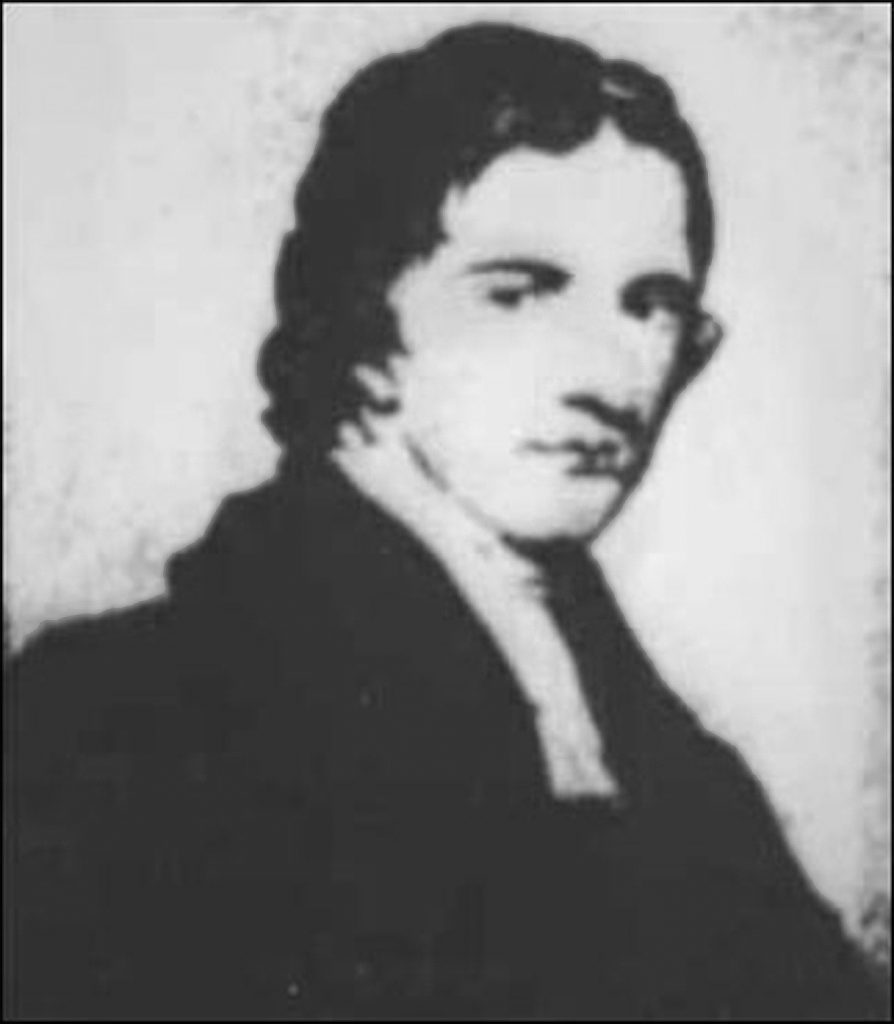
Rev. Robert Little
England’s religious restrictions drove Unitarian minister, Rev. Robert Little, to emigrate to America. After opening a hardware store on Pennsylvania Avenue, he became deeply involved in starting a Unitarian church. When the First Unitarian Church of Washington was established on November 11, 1821, Rev. Little was named senior minister and given an annual salary of $1,000. Rev. Little believed in physical resurrection, Christianity’s divine authority, and the favored status of the Jews. Intelligent and eloquent, uniting great simplicity with great energy, Rev. Little served the church well. In August 1827, on vacation with family, Rev. Little died of violent inflammation of the brain (probably heatstroke).
Founders, First Unitarian Church of Washington
John Quincy Adams
C. Andrews
Thomas Bates
Charles Bullfinch
John C. Calhoun
M. Claxton
William Cooper
William Cranch
William Eliot
Noah Fletcher
C.S. Fowler
S. Franklin
Joseph Gales, Jr.
Joseph Gales, Sr.
Seth Hyatt
Robert Little
P. Mauro
G.F. May
Moses Poor
N.P. Poor
C. Robinson
William W. Seaton
Pishey Thompson
Richard Wallach
A.B. Waller
John F. Webb
Thomas C. Wright
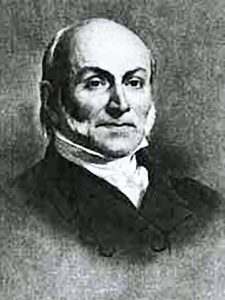 John Quincy Adams is a prominent founding member of the First Unitarian Church of Washington.
John Quincy Adams is a prominent founding member of the First Unitarian Church of Washington.
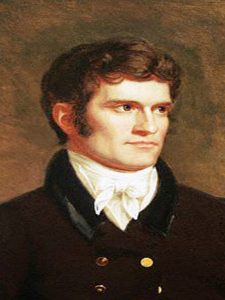 John C. Calhoun is a prominent founding member of the First Unitarian Church of Washington.
John C. Calhoun is a prominent founding member of the First Unitarian Church of Washington.
 The famous architect and designer, Charles Bulfinch, was born to a wealthy Boston family, educated at Harvard, traveled throughout Europe, and chosen by President James Monroe to be the Architect of the Nation’s capital was a founder of our church and the architect of the First Church of Washington.
The famous architect and designer, Charles Bulfinch, was born to a wealthy Boston family, educated at Harvard, traveled throughout Europe, and chosen by President James Monroe to be the Architect of the Nation’s capital was a founder of our church and the architect of the First Church of Washington.
A serious fire near 6th and D Street created an urgent need for a warning bell. Several citizens, including the President of the United States, contributed to the cost of a bell for the tower at the First Unitarian Church of Washington. Joseph Revere, son of Paul Revere, crafted the bell in 1822. The Revere Bell has moved twice with the congregation into new church buildings and, two centuries on, still sounds on Sundays and special occasions.

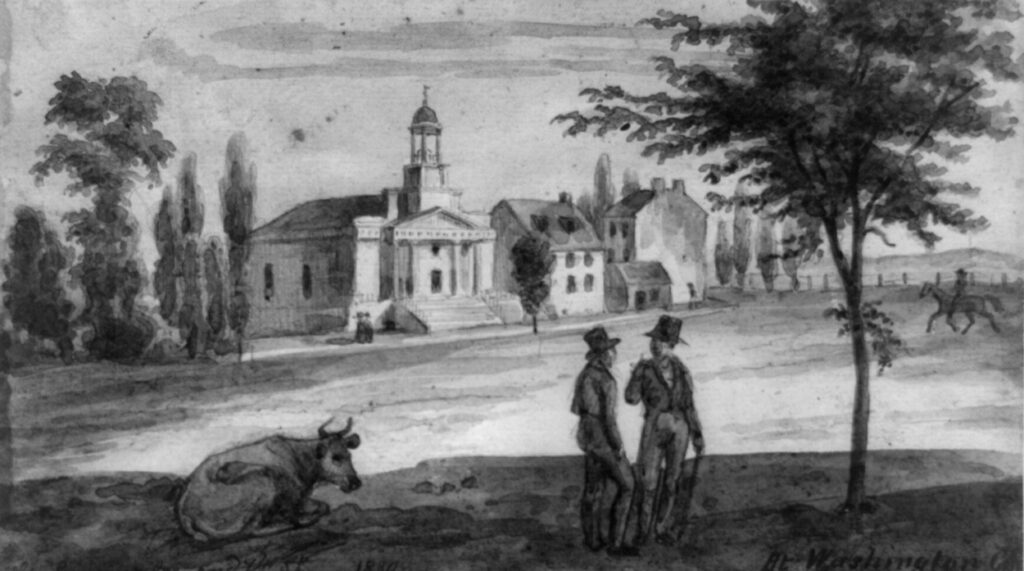
Through the efforts of the founders, money was raised to build a small simply designed church, seating 350 persons, on the northeast corner of 6th and D Street in an aristocratic neighborhood’. The First Unitarian Church of Washington was constructed for $12,069.35 and dedicated on June 9, 1822.
1828 – 1837
The Struggle
In 1800, the seat of our country’s government moved to Washington, DC, from Philadelphia, Pennsylvania. Consequently, members of Congress conducted business in DC, but continued to reside elsewhere with their families. They considered the area underdeveloped. In contrast to the city you see today, DC in the 1820s was small, stark, and rural with no community water supply, few schools, and not many cultural activities. Unfortunately, that was not the only stumbling block. Money was a major obstacle. Some pledges to the church were never paid due to death and relocation. Often salaries were paid late, supplies were not always available, and sometimes the church building was closed.
Disaster constantly seemed just around the next corner. The core of the Unitarian Church was located in Massachusetts, 445 long miles from the struggle, making it slow or unable to provide help. It was solely the devotion and loyalty of the founding
members that kept the church doors open. For various reasons, ministers chose not to stay long at the church. The time spent in the pastorate ranged from a few months to no longer than six years in the period from 1827 to 1877. Having so many pastors in 50 years meant no connection between leadership, the community, and the congregation. Personal loyalties and close relationships with the pastor, needed to sustain growth, were absent.
The church failed to prosper—the pulpit was like a revolving door—constantly moving ministers in and out of people’s lives. Slavery plagued the church from its inception. Rev. Robert Little, as early as 1824, spoke against the issue of slavery. Since owning enslaved persons was legal in DC, and so many citizens embraced the southern viewpoint, the views of the congregation were mixed. The ministers, on the other hand, were clear—abolish slavery. Tensions from colliding beliefs added to the mounting difficulties. A growing number of candidates either hesitated to apply for the job or were turned away. It all came to a head in 1854, when Rev. Moncure Daniel Conway became the senior minister.
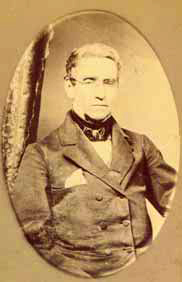 Rev. Little’s sudden death launched a lengthy search for his replacement, news of which traveled throughout New England’s universities and churches, finally producing Rev. Andrew Bigelow. A man of distinguished ancestry, Rev. Bigelow had already served in churches in Eastport, Maine, and Medford, Massachusetts. His tenure in Washington was quite short; barely a year had passed before he decided to return to Boston, where he worked for the next 30 years as a minister-at-large. A forerunner to today’s social service providers, Rev. Bigelow worked with the poor, doing what he could to improve and elevate their lives.
Rev. Little’s sudden death launched a lengthy search for his replacement, news of which traveled throughout New England’s universities and churches, finally producing Rev. Andrew Bigelow. A man of distinguished ancestry, Rev. Bigelow had already served in churches in Eastport, Maine, and Medford, Massachusetts. His tenure in Washington was quite short; barely a year had passed before he decided to return to Boston, where he worked for the next 30 years as a minister-at-large. A forerunner to today’s social service providers, Rev. Bigelow worked with the poor, doing what he could to improve and elevate their lives.
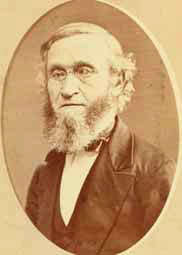 Rev. Casneau Palfrey, newly graduated from Harvard Divinity School, arrived with high expectations, but, although he was an excellent speaker with a good message, the church failed to prosper. To fill the pews, the church advertised upcoming sermons, but to no avail. After six years, Rev. Palfrey tendered his resignation, stating private reasons, and moved on to serve Unitarian churches in Grafton and Barnstable, Massachusetts, and then—for 23 years—the church in Belfast, Maine.
Rev. Casneau Palfrey, newly graduated from Harvard Divinity School, arrived with high expectations, but, although he was an excellent speaker with a good message, the church failed to prosper. To fill the pews, the church advertised upcoming sermons, but to no avail. After six years, Rev. Palfrey tendered his resignation, stating private reasons, and moved on to serve Unitarian churches in Grafton and Barnstable, Massachusetts, and then—for 23 years—the church in Belfast, Maine.
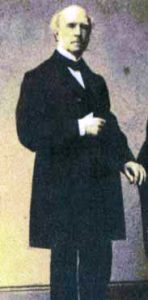 First Unitarian Church made every effort to fill its pulpit with the best available ministers, even if they could not stay permanently. Rev. Frederick A. Farley, who had officiated at Rev. Robert Little’s funeral, took a leave of absence from his church in Providence, Rhode Island, to lead First Unitarian’s Sunday services for seven months in 1837. He later moved to a church in Brooklyn, New York, where he remained for 21 years until his retirement.
First Unitarian Church made every effort to fill its pulpit with the best available ministers, even if they could not stay permanently. Rev. Frederick A. Farley, who had officiated at Rev. Robert Little’s funeral, took a leave of absence from his church in Providence, Rhode Island, to lead First Unitarian’s Sunday services for seven months in 1837. He later moved to a church in Brooklyn, New York, where he remained for 21 years until his retirement.
1838 – 1847
Rev. Stephen Greenleaf Bulfinch
After Columbia College and Harvard Divinity School, a missionary assignment in Georgia, and a brief stint in Pittsburgh, Pennsylvania, Rev. Stephen G. Bulfinch, the youngest son of architect Charles Bulfinch, came home to the church his father designed and help found. His $600/year salary was so low, a congregant tried to secure him a job with the government. The earnest Rev. Bulfinch published at least three volumes of lyric poems and, with his son, wrote many hymns. His printed sermons portrayed an earnest man. His invitation to Quaker feminist and reformer, Lucretia Mott, to speak from his pulpit was a bold action for the times. In 1844, Rev. Bulfinch left Washington and spent the rest of his life in a small parish church in New England.
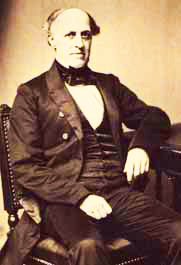
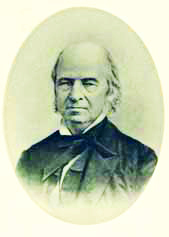
Rev. Orville Dewey
Reverend Orville Dewey came as an interim minister on three different occasions in 1846, 1851, and 1852. He stayed for short periods each time. The great William Ellery Channing, father of American Unitarianism, chose Reverend Dewey to be his associate in Boston. Ill health forced him to leave that assignment and one other in Bedford, Massachusetts. He distinguished himself wherever he went. Thinking the temporary appointment in Washington, DC would not be stressful, he was sent again and again. Many liked his style of preaching including President Fillmore and Daniel Webster. Reverend Dewey could not stay, so the minister’s position remained vacant.
Rev. Edward Everett Hale
At the age of twenty-two and directly out of Harvard Divinity School, Reverend Edward Everett Hale arrived. His impressive ancestry included being: son of Nathan Hale, proprietor and editor; nephew of Edward Everett, orator and statesman; and
grandnephew of Nathan Hale, spy. After a few months the church offered him the senior minister’s job, but he declined pleading inexperience. Reverend Hale later had a distinguished career as a writer, Unitarian minister, and, in 1903, the Chaplin of the United States Senate. He was pastor of the Church of the Unity from 1846 to 1856 in Worcester, Massachusetts. Then, he ministered for forty-four years at South Congregational (Unitarian) Church in Boston. It has been said that Reverend Hale combined a forceful personality, organizing genius, and liberal practical theology into a long successful career. There is a statue erected in Reverend Hale’s
honor in Boston’s Public Garden.


1847 – 1851
Rev. Samuel Longfellow
1847 brought Reverend Samuel Longfellow, brother of poet Henry Wadsworth Longfellow, to First Unitarian Church of Washington. He, like others, came to Washington, DC right out of divinity school. Able to write numerous beautiful hymns, his works were published in church hymnals, in numerous denominations, all over the country. Calling slavery, “a great evil”, he discovered the congregation did not favor the abolitionist stance. He did not believe anyone who spoke against slavery could ever fill the pulpit at First Unitarian Church of Washington. After leaving Washington, DC, Reverend Longfellow became the minister in Germantown, Pennsylvania and in Brooklyn, New York.

“FOR SALE”
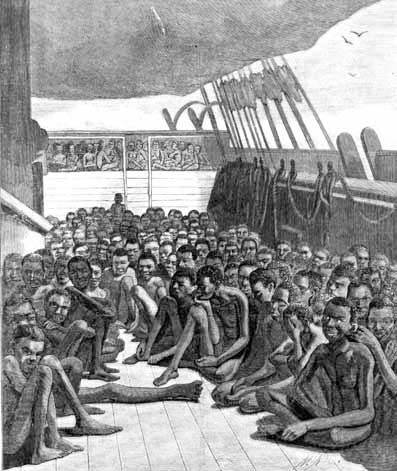
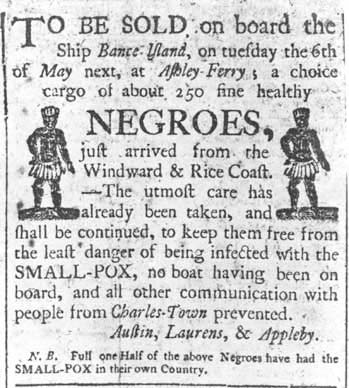
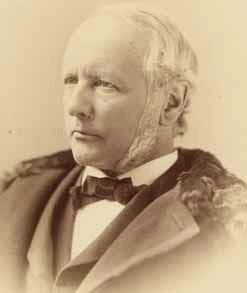
Rev. Joseph Henry Allen
Reverend Joseph Henry Allen was next in the long line of ministers that came and stayed for a brief period. He completed Harvard Divinity School and served four years at Jamaican Plain Unitarian Church, in New York prior to his arrival in Washington, DC. Although, he stayed for only
three years, he found his experience interesting and maturing. He was able to meet men who were important to the country, including President Millard Fillmore. Dealing with the problems of the day meant preaching about slavery and Reverend Allen, like others, did not hesitate to speak for freedom. This reason alone explained why his tenure in Washington, DC was so short. From First Unitarian he spent a brief time at a church in Bangor, Maine until he determined the ministry was not suited for him. Reverend Joseph Henry Allen preformed a greater service to liberal religion as an editor, author, teacher, and lecturer.
1854 – 1861
Rev. Moncure Daniel Conway
Born in Falmouth, Virginia to a slave holding father and an abolitionist mother, Reverend Moncure Daniel Conway was called to the pulpit at the age of twenty-two. He had a keen interest in the exploration of ideas—religious, social, political and economic. Of the many sermons he preached two were about slavery. The first included a dialogue between a southerner and a northerner. Reverend Conway held the North and South equally responsible for the maintenance of the evil institution—slavery. While much of the congregation disagreed with his views; the freedom of the pulpit was respected. Conway traveled north to raise funds from his Quaker friends and well-known Unitarians for church repairs. On his return, he preached the second sermon advocating the secession of the south, in lieu of the potential devastation of war. In 1856, the congregation voted for his dismissal. Sometime later, at his mother’s request, Reverend Conway located the enslaved persons who had escaped his family’s plantation and escorted them, via train, to safety in Ohio. Establishing a Conway colony, they prospered. In June 2006, their descendants gathered with representatives from Virginia and All Souls Church at the Conway home for the Juneteenth celebration.


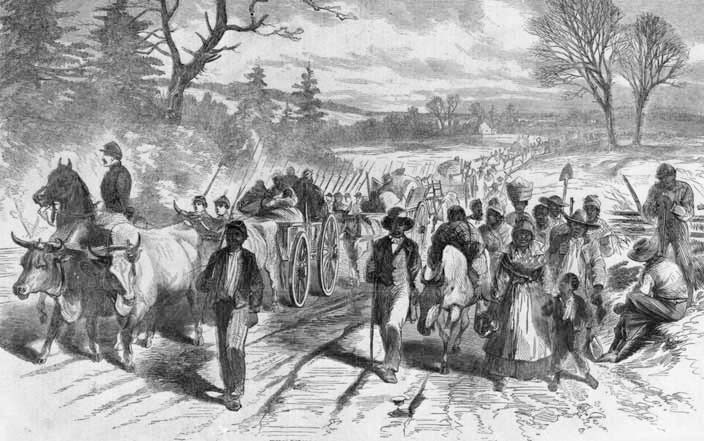
Rev. William D. Haley
Reverend Haley brought to his ministry the same forces and practices Conway had. Born in England, he studied at Harvard and graduated from Meadville Theological School. Alton, Illinois, the center of pro-slavery agitation, was his first assignment. In Illinois, as in Washington, DC, Reverend Haley felt it very important to lecture (preach) on the subject. “What may best be done by Christianity for the working class?” He felt a portion of each Sunday sermon should contain subjects to benefit the congregation rather than presenting some dry philosophical argument. Perhaps, this is part of the reason he was forced to leave the pulpit in Alton. Next, Haley took an extended trip amongst the Chippewa Indians where he collected valuable scientific and literary information. Then, came the call from First Unitarian Church of Washington, DC. During his brief three-year stay in Washington, DC, he established a mission for poor children and gathered songs for a hymnal with an Order of Evening Prayer. In 1861, Reverend Haley left to be a Chaplin in the Union Army in Massachusetts leaving the pulpit at First Unitarian vacant. During the battle of New Bern, North Carolina he was wounded. He went to England to recuperate and
didn’t return to America after the war.
1861 – 1865
Rev. William Henry Channing
William Henry Channing, nephew of William Ellery Channing, Father of American Unitarianism, and great grandson of the other William Ellery, signer of the Declaration of Independence, returned to the United States from England to take part in the struggle. The pulpit was closed to him earlier because of his views on slavery. Now, he did not hesitate to support the war from the pulpit and the church still grew. His suggestion that the church be used as a hospital was approved, and in appreciation, the Senate donated its chamber to hold Sunday service for First Unitarian Church of Washington. While in the Senate Chambers Reverend Channing invited guest speakers that included: Reverend Henry Highland Garnett, a Negro, of Fifteenth Street Presbyterian Church and his choir. Reverend Channing showed an interest in the Negro by forming Freedmen’s Relief Union and served as its president. He was named Chaplin of Stanton Hospital until the war ended. Following the conclusion of the war and Lincoln’s assassination, Reverend Channing returned to England and his family. He visited America on occasions to give lectures, attend meetings, and to preach in different pulpits.

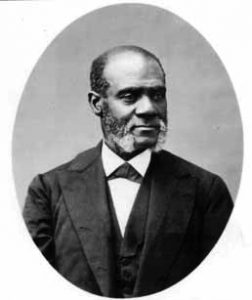 Reverend Garnett spoke to First Unitarian Church of Washington’s congregation in the Senate Chambers.
Reverend Garnett spoke to First Unitarian Church of Washington’s congregation in the Senate Chambers.
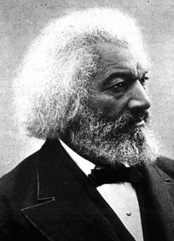 Frederick Douglass was invited to the Lincoln White House and was a guest at the First Unitarian Church of Washington where he once took communion.
Frederick Douglass was invited to the Lincoln White House and was a guest at the First Unitarian Church of Washington where he once took communion.
 Scenes from the typical enslaved person’s life before gaining freedom through the Emancipation Proclamation
Scenes from the typical enslaved person’s life before gaining freedom through the Emancipation Proclamation
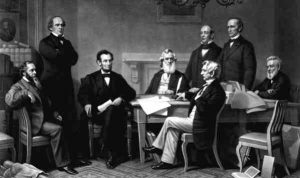 Reading the Emancipation Proclamation
Reading the Emancipation Proclamation
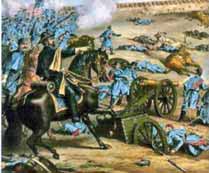
One leads to the other…
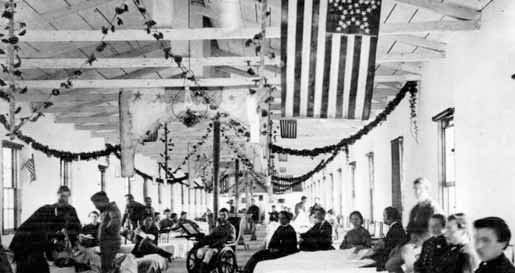
1865 – 1870
Rev. Dr. Rufus P. Stebbins
Reverend Rufus Phineas Stebbins was born in Wilbraham, Massachusetts March 3, 1810. He graduated Wesley Academy, Amherst College and received the Doctor of Divinity Degree from Harvard Divinity School in 1844. Dr. Stebbins was president of Meadville Theological School in Pennsylvania (1844-1856) and the American Unitarian Association (1862-1865). He and Dr. Henry W. Bellows formed the National Conference later known as the General Conference. Reverend Stebbins was sent by the AUA as interim minister to First Unitarian Church of Washington in 1867. He served for six months. At this time the church grew and prospered. A Sunday School for Colored People was granted the use of the church on Sunday afternoons and funds were appropriated for its operation. The establishment of a mission Sunday school for neglected white children was also proposed. Reverend Stebbins was
instrumental in the formation of many missions and societies, which were sustained by the American Unitarian Association (1871-1877). He died in Cambridge, Massachusetts (1885) at the age of seventy-five.
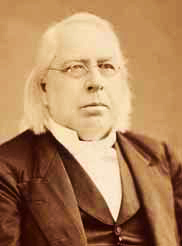
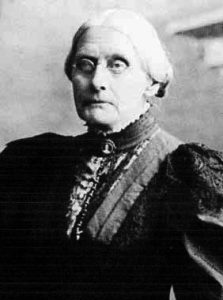
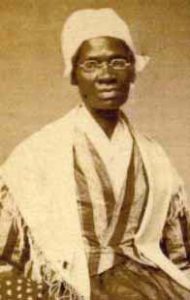
Susan B. Anthony and Isabella Baumfree (Sojourner Truth) — two of many women involved in the fight for women’s rights that all the Unitarian Ministers strongly supported
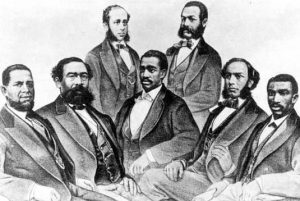 The first colored Senator and Representatives elected
The first colored Senator and Representatives elected
to Congress: (left to right) Senator Hiram Revel of
Mississippi, Representatives Benjamin Turner of
Alabama, Robert DeLarg of South Carolina, Josiah
Walls of Florida, Jefferson Long of Georgia, Joseph
Rainey and Robert Ellis of South Carolina
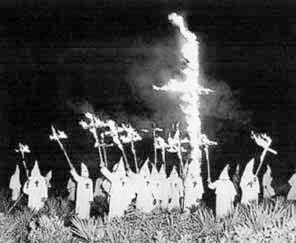 The change in the political climate following the Emancipation Proclamation and the election of Negroes to Congress resulted in the rise of white supremacy organizations such as the Ku Klux Klan.
The change in the political climate following the Emancipation Proclamation and the election of Negroes to Congress resulted in the rise of white supremacy organizations such as the Ku Klux Klan.
Rev. William Sharman
Reverend William Sharman was educated in Sheffield, England as a Methodist minister. He later joined the Unitarians and became the minister of the Unitarian Church in Aberdeen, Scotland. After coming to the United States, he served several churches for brief intervals. In early 1868, Reverend Sharman was installed in the Washington church for a two-year period. Little is known of his time at First Unitarian Church for the records are missing. We do know that the political atmosphere in the country after the Civil War resulted in several Negroes being elected to the United States Congress, and it also created the rise of organizations such as the Ku Klux Klan. After leaving Washington, DC, it was reported he had a business in the state of Texas. Returning home to England, he ministered to congregations in Plymouth and Preston. Reverend Sharman died in 1889.
1870 – 1880
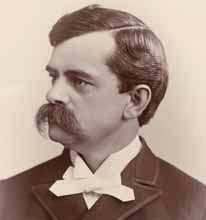
Rev. Frederic Hinckley
Reverend Frederic Hinckley was the successor to Reverend Sharman at the Washington church in 1870. He founded the “Unity Club”. This club held group meetings in individual homes to discuss general subjects like music, religion, and social issues. This was a first of its kind for the church and very popular. On June 29, 1872, the church celebrated its 50th anniversary. The fifty-year-old church at Sixth and D Streets had become dilapidated. It was described as “dreary, mildewed, and tumbled-down”. Construction of a new church was a focus for Reverend Hinckley. The plans for a new building were put off again and again. First, the money was used to help those involved in the Great Fire of Chicago. Later, fighting over the type and size of the new structure and who would be in control of the project added more delays. Also, the church split over views regarding the Bible and Jesus. The congregation could not agree on a theological doctrine to cover these issues. The membership divided into two groups, but the congregation continued to meet in the same building. The resulting tension made it impossible for the minister to remain. In 1875, after five years, Reverend Hinckley resigned his
position at the church leaving the pulpit vacant once more.
The First Unitarian Church of Washington in a changing neighborhood. 1877 was the year All Souls Church Unitarian was renamed and relocated to a new building at 14th and L Streets, NW, Washington, DC.


Rev. Clay MacCauley
Reverend Clay MacCauley arrived, in 1877, the same year the cornerstone for the new building was laid. In the time it took to build at 14th and L Streets, the First Unitarian Church had been reorganized and renamed. Given the choice of being called “All Souls Church” and “The Church of All Souls”, the congregation chose the former. In January 1878, the new church was open for services. With $35,000.00 from the American Unitarian Association, $10,000.00 from local contributions, and $20,000.00 from the sale of the old building, All Souls Church was debt free. Reverend MacCauley’s theology was more about love than sin. He believed sin did not displease God or deserve punishment. The congregation more than tripled in size during his
short tenure. He had planned to grow old in his service to All Souls Church, but by May of 1880 he was in ill health. Resigning, he worked for the Smithsonian Institution with the Seminole Indians in Florida. Later, he founded the Japanese Unitarian Mission where he worked for 25 years. Reverend MacCauley’s life was full of adventures and accomplishments well beyond his three years at All Souls Church. A prolific writer, he authored many books about his adventures. Three of his works have been reprinted since 2000.

1881 – 1899
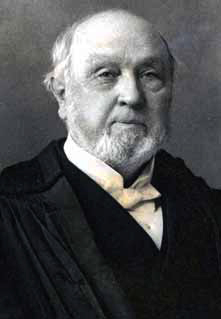

Rev. Rush Rees Shippen
Reverend Rush Rees Shippen was the man who followed Reverend MacCauley into the pastorate of All Souls Church in 1881. He was a published writer, editor, skillful flutist, excellent chess player, and architect in all but profession. Standing out as a leader, he championed antislavery, Negro education, and women’s rights.
Reverend Shippen served fourteen fruitful years at All Souls Church through 1895 – longer than any pastorate before him. Entering Allegheny College at the tender age of twelve, he began teaching in his junior year. In 1844, Mr. Shippen enrolled in the first class at Meadville Theological School, graduating in 1849. Before arriving in Washington, DC, Reverend Shippen was minister at the First Unitarian Society in Chicago, Illinois and the Church of the Unity in Worchester, Massachusetts. Both churches experienced rapid growth making it necessary to enlarge the buildings. For ten years, immediately preceding his appointment at All Souls Church, he served as secretary of the American Unitarian Association. All of these great experiences prepared him well for the rapidly growing Unitarian church in the nation’s capital. During Reverend Shippen’s tenure at All Souls Church, members had a choice of morning or evening services as the church flourished. He was a welcomed preacher, always ministering to a full congregation. Many new clubs and groups added to the busy life at the church. As an example, The Twentieth Century Club sponsored a cooking and sewing club for Negro children and a reading room for men, which developed into Washington’s first Boys Club. Music was important during his stay and was of fine quality. Life was so enriched at All Souls Church it spread out into the entire city.
Reverend Shippen was a fine speaker – loved by the congregation and the city. He was involved in community projects, most notably, as a trustee of Howard University and as an assistant to Clara Barton in founding the Red Cross. In his faith Reverend Shippen was satisfied with a simple creed – the Fatherhood of God and the Brotherhood of Man. One of his most popular sermons, taken from Dickens, “Think of me at my Best”, represented his attitude toward the word and his fellowman. He was a happy warrior in the cause of a cheerful faith. In 1895, because of his advanced age, Reverend Shippen resigned. Sixteen years later, the Meadville Theological School bestowed the Doctor of Divinity Degree on Reverend Shippen – the first honorary degree given by the school.
Rev. E. Bradford Leavitt
It took fourteen months to gain the services of Reverend E. Bradford Leavitt at All Souls Church. This Harvard graduate spent three years as minister at the Unitarian Church in Brattleboro, Vermont. He was installed at All Souls Church in 1897. Reverend Shippen was among those participating in his installation service. Reverend Leavitt was an immediate success. The congregation increased steadily, especially with many young people. One hundred youngsters arrived for a confirmation class when only a dozen were expected. Free kindergarten was established during his pastorate. Pew fees were raised providing additional money for repairs, electric lights, and other operating expenses. Serving only two years, Reverend Leavitt resigned to be minister of the First Unitarian Church of San Francisco. Still in California during the 1906 fire and earthquake, he distinguished himself as chairman of the committee distributing $3,000,000.00 to charitable institutions aiding in the recovery of that city. Later, Reverend Leavitt ministered to the United Liberal Church in Pasadena, California.
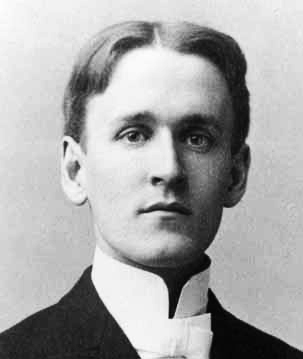
 Check made to All Souls Church for raised pew fee.
Check made to All Souls Church for raised pew fee.
 Thomas Edison patented the carbon filament lightbulb, first in 1879 and then a year later in 1880. Shortly thereafter, All Souls Church began the work of raising funds to update the church to electric lighting.
Thomas Edison patented the carbon filament lightbulb, first in 1879 and then a year later in 1880. Shortly thereafter, All Souls Church began the work of raising funds to update the church to electric lighting.
1901 – 1943
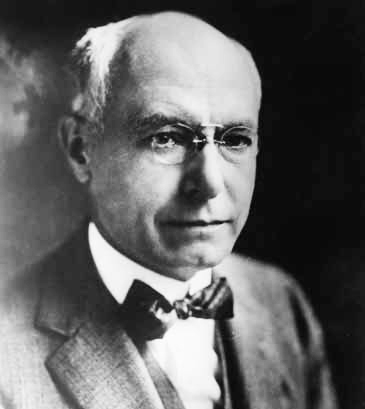

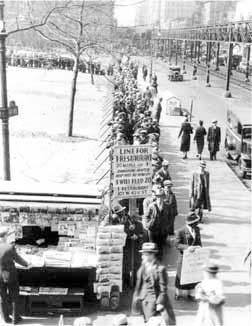
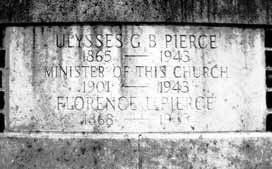
Rev. Dr. Ulysses Grant Baker Pierce
Reverend Ulysses Grant Baker Pierce was born April 17, 1865, in Providence, Rhode Island. He attended Divinity School at Hillsdale College in Michigan. Although he started to pursue studies in the Baptist ministry, he gravitated to Unitarianism and its movement away from creedal beliefs. He completed his studies at Harvard Divinity School in 1891. Having served Unitarian churches in Decorah, Iowa; Pomona, California; and Ithaca, New York, he was installed as minister of All Souls Church on April 11, 1901.
Dr. Pierce was noted for the spirituality of his message. He preached that the Spirit of the living God was personal and immediate not written on tablets of stone, but in the human heart. Although momentous events took place during his tenure at All Souls Church – WWI, the Great Depression, and the beginning of WWII – they were not the subjects of his sermons. As well as being a very popular preacher, Dr. Pierce devoted much of his time to community service. He was, at various times, on the Board of Directors of the American Unitarian Association; a trustee to Gallaudet College and to Howard University; and President of the Board of Visitors, St. Elizabeth’s Hospital. He was Chaplain of the U. S. Senate from 1909–1913.
Washington Unitarianism enjoyed a tremendous growth in the early 20th century. People were drawn by Dr. Pierce’s masterful sermons and their message of liberal Christianity. The frequent presence of President William Howard Taft at the service during his term of office (1909 – 1913) added an additional incentive to attend All Souls Church. Anticipating this growth, Dr. Pierce’s report to the congregation in April 1902 suggested a larger facility and staff. After first purchasing a lot on Sixteenth Street near R and having a cornerstone laid by President Taft, in 1913, the start of World War I and inadequate preparation necessitated a postponement and a move to a new site.
World War I saw All Souls, like most churches, 1901-1943 actively engaged in the War effort: providing recreational activities for the troops, conducting sale of Liberty Bonds, and donating an ambulance to the Red Cross. With the conclusion of the war, plans proceeded for a new building for All Souls Church. The site on the corners of 16th and Harvard Street NW was purchased and plans went forward for the new building. The cornerstone laid in 1913 was never recovered. Dr. Pierce led the plans for the building and was instrumental in getting memorial gifts for the decorating and furnishing of the building.
The Church continued to flourish. Attendance at the church school was substantial. New programs were added: “The Quiet Period” was the Sunday afternoon organ recital during the winter months. A cultural program was also added, occasionally followed by supper. In 1925, the Sunday Evening Motion Picture Hour was started, which continued until 1956. The Motion Picture Hour and other activities drew many people, including neighbors, to the Church on Sunday afternoons.
Dr. Pierce died October 10, 1943 at the age of 78. His ashes were entombed in a niche in the southwest corner of the Court of the Founders. Mrs. Pierce died September 6, 1945. Her ashes were also placed in the wall of the courtyard.
1944 – 1957
Rev. Dr. A. Powell Davies
Emigrating from England looking for greater religious freedom, Reverend A Powell Davies came to America. After spending four years as a Methodist Minister in Portland, Maine, he embraced the liberal Unitarian ideals. For the next eleven years he was the Unitarian Minister at the Community Church of Summit, New Jersey. His beliefs concerning universal freedom of the mind and religion brought national attention to him and a call to the pulpit at All Souls Church in 1944. He believed that true religion had no barrier. His message was delivered from the pulpit at All Souls Church, through his books and articles, with broadcasts, and numerous speaking engagements. He was a national and international force, championing causes against racial injustice, censorship, unfair Congressional investigations, public servant persecutions, the activities of communist and pro-communist groups, miscarriages of justice, and petty police tyrannies in Washington, the United States and the world.
Holding steadfast to his beliefs, Reverend Davies welcomed people into All Souls Church from everywhere — all races and creeds. Dr. Davies was responsible for the formation of other Unitarian Churches in the greater Washington area. On the international scene he organized food and clothing for the needy in Europe, school supplies for Hiroshima and Nagasaki students, money for needy Paris college students, and funds for the Child Welfare and Educational Missions in Germany to mention a few. Where he saw a need he worked to erase that need.
In 1937 a boys club was started at All Souls, which involved about 1900 white boys. In 1949 and again in 1954, this group was asked to open their door to minorities. Refusing, the group pulled their program out of the building. Dr. Davies quickly countered this action by having the Unitarian Service Committee immediately organize and fund the integrated Columbia Heights Boys Club at the church. The A. Powell Davies Committee at All Souls still promotes causes dear to his ministry.
On September 26, 1957, Reverend A. Powell Davies suffered a fatal heart attack ending a glorious thirteen-year ministry at All Souls Church.

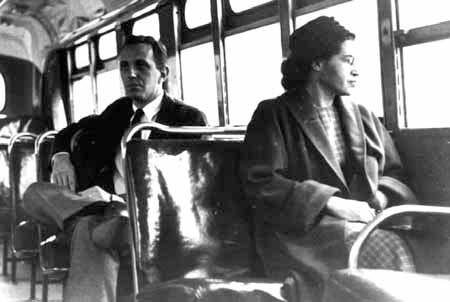

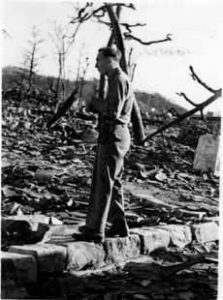
 Hiroshima bombing and the devastating aftermath.
Hiroshima bombing and the devastating aftermath.


The ties between All Souls and Japan began in 1947 following the dropping of the atomic bombs on Hiroshima and Nagasaki, Japan, when the children of All Souls and the students of Honkawa Elementary School (in Hiroshima) responded to the inhumanity of weapons of mass destruction through the beauty of children’s artwork, which still reverberates with the triumph of hope over despair. The Heiwa Peace Project carries on this work today.
1958 – 1968
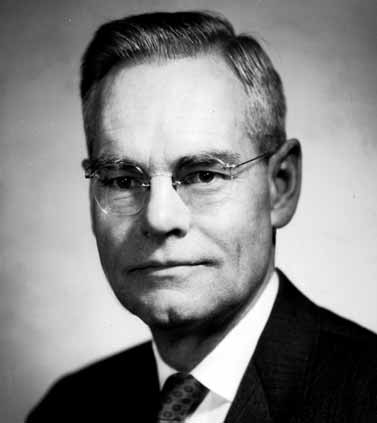
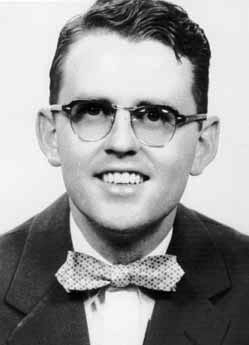
Rev. Duncan Howlett
Finding a replacement for Dr. Davies was not an easy task. It took a year, but Reverend Duncan Howlett was an outstanding choice. He attended Harvard College and Law School before entering Harvard School of Divinity. Graduating with honors, he delivered his own commencement address. He filled the pulpit in Salem and New Bedford, Massachusetts and spent twelve years at the First Church of Boston. These experiences prepared Dr. Howlett for the important role as Senior Minister of All Souls Church in the nation’s capital.
His ministry occurred during a very turbulent period in American history – the Civil Rights Movement. Dr. Howlett believed the church should always serve the immediate community. He recommended the Board of Trustees work with the Social Welfare Committee to develop the Girard Street project. The weekend and night program changed lives for the better, which proved individuals could take a social problem and make a difference. He marched for jobs, freedom and against poverty; opened Pierce Hall for food distribution; and supported Planned Parenthood and Home Rule all with courage and commitment. Dr. Howlett was very involved in Civil Rights working on several levels for the cause.
Due to his busy schedule Dr. Howlett hired Reverend James Reeb as Assistant Minister in 1959. He was soon deeply involved in community matters leaving little time for church duties. Wanting to become a full time civil rights activist he resigned his position in 1964. By 1965, in Selma, Alabama, Reverend James Reeb became a martyr in the fight for freedom.
The music department flourished when Reverend Howlett hired Karl Halvorson as Organist and Director of Music. Music helped fill the pews for services and programs. Critics, from Washington’s major newspapers wrote glowing reviews. This added yet another dimension to life at All Souls Racial integration happened steadily within all committees and activities at the church. The Director of Religious Education and the President of the Board of Trustees were both black. The Board of Trustees was encouraged by Reverend Howlett to seek a black minister to replace him upon his retirement. In 1968, following ten years of outstanding service to All Souls Church, Reverend Duncan Howlett’s tenure came to an end.
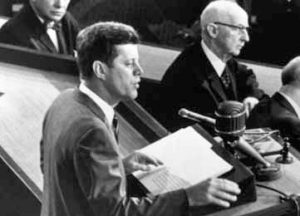

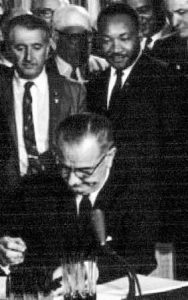
The Civil Rights Movement resulted in the assassination of President John F. Kennedy, Attorney General Robert F. Kennedy and Civil Rights leader, Martin Luther King, Jr.
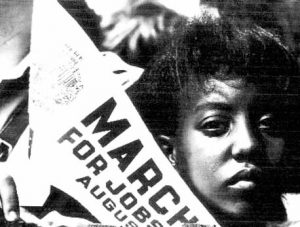 The March on Washington for Jobs and Freedom, also known as simply the March on Washington or The Great March on Washington, was held in Washington, D.C., on Wednesday, August 28, 1963. The purpose of the march was to advocate for the civil and economic rights of African Americans. At the march, final speaker Dr. Martin Luther King Jr., standing in front of the Lincoln Memorial, delivered his historic “I Have a Dream” speech in which he called for an end to racism.
The March on Washington for Jobs and Freedom, also known as simply the March on Washington or The Great March on Washington, was held in Washington, D.C., on Wednesday, August 28, 1963. The purpose of the march was to advocate for the civil and economic rights of African Americans. At the march, final speaker Dr. Martin Luther King Jr., standing in front of the Lincoln Memorial, delivered his historic “I Have a Dream” speech in which he called for an end to racism.
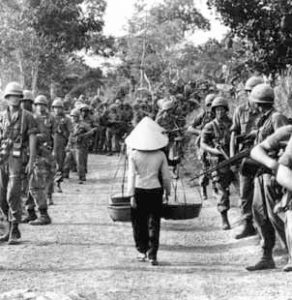 While the country fought itself for Civil Rights, the International scene was not any better. The Vietnam War raged throughout, adding fuel to an already tense political and social climate.
While the country fought itself for Civil Rights, the International scene was not any better. The Vietnam War raged throughout, adding fuel to an already tense political and social climate.
1969 – 1992
Rev. David Hilliard Eaton
“May the words of my mouth and the meditations of my heart be acceptable in thy sight, my Lord and my Redeemer always” was the prayer Reverend David Hilliard Eaton offered at the beginning of his sermons. A Washington, DC native, he graduated from Howard University and Boston University School of Theology before being ordained as a Methodist minister in 1957.
Moving to Pacoima, California Reverend Eaton founded and ministered the First Methodist Church in that city. Returning to Washington, DC he held several positions at Howard University, Federal City College, and hosted successful radio and television talk shows. Reverend Eaton was the first African American Senior Minister in the Unitarian Universalist Association serving the congregation of All Souls Unitarian Church for twenty-three years. Reverend Eaton took the pastorate at All Souls Church during a time of great social and economic transition in the neighborhood and within the church. With roots very deep in the community he was very aware of the challenges he faced. He took a predominately white church and transformed it into a culturally diverse congregation. His ability to handle difficult and sensitive matters in a calm and dignified manner was a very strong attribute and required on many occasions during his tenure.
Reverend Eaton was a humanist and not afraid to stand up for human rights witnessed by his strong stand against the “No Knock Policy”. Community involvement was very much a part of his ministry. He served on many community boards, most notably as president for three terms on the Washington Board of Education. He was involved with groups caring for the mentally ill, AIDS education, tutoring, and urban renewal through the All Souls Housing Corporation. He had international ties with Ethiopia, India and South Africa.
Near the end of his pastorate, Reverend Eaton contracted hepatitis B. In his weakened condition he was forced to curtail his activities. On Easter Sunday, April 19, 1992, he preached his last sermon. In the message he praised the importance of love in the ministry and life. On October 21, 1992, Reverend David Hilliard Eaton passed away.
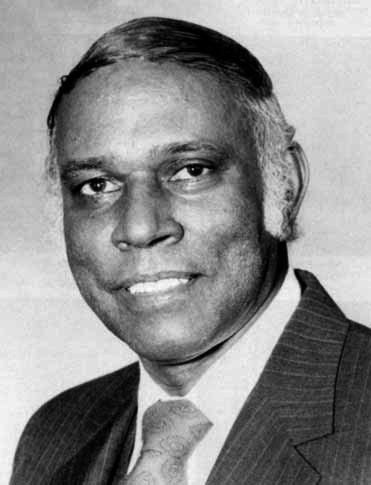
 In 1977, Dr. Ysaye Barnwell, a member of Sweet Honey in the Rock, formed an interracial gospel group called the All Souls Jubilee Singers.
In 1977, Dr. Ysaye Barnwell, a member of Sweet Honey in the Rock, formed an interracial gospel group called the All Souls Jubilee Singers.

 Taylor Branch, Pulitzer Prize winning author is a member of All Souls Church.
Taylor Branch, Pulitzer Prize winning author is a member of All Souls Church.
In Parting the Waters, Branch chronicles the struggle, from the twilight of the Eisenhower years through King’s fiery political baptism, the ascension of John F. Kennedy, and ultimately, the dawning of the New South. Moving from the black churches where the movement began in anthems, sermons, and prayers to Washington, where the Kennedy brothers weighed the demands of a down-trodden people against the volatile realities of politics, Branch weaves a tapestry of exciting stories: the Montgomery bus boycott, the Freedom Rides, the siege of Birmingham, the lunch-counter sit-ins, the church bombings, and as the movement reached its apex, the tragedy of Kennedy’s assassination.
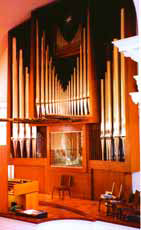 Rieger Organ Company has built outstanding organs throughout the world including several in the United States. Most notable is a magnificent one in All Souls Unitarian Church in Washington, D.C. that has been featured on many recordings by Columbia Records. The one of a kind organ was dedicated with a series of inaugural concerts from November 30 to December 7, 1969 with Marie-Claire Alain as recitalist.
Rieger Organ Company has built outstanding organs throughout the world including several in the United States. Most notable is a magnificent one in All Souls Unitarian Church in Washington, D.C. that has been featured on many recordings by Columbia Records. The one of a kind organ was dedicated with a series of inaugural concerts from November 30 to December 7, 1969 with Marie-Claire Alain as recitalist.
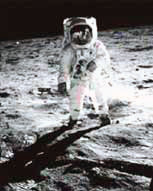 The beginning of Rev. Eaton’s tenure at All Souls also saw the beginning of space exploration. Apollo 11 blasted off on July 16, 1969. Neil Armstrong, Edwin “Buzz” Aldrin and Michael Collins were the astronauts on Apollo 11.
The beginning of Rev. Eaton’s tenure at All Souls also saw the beginning of space exploration. Apollo 11 blasted off on July 16, 1969. Neil Armstrong, Edwin “Buzz” Aldrin and Michael Collins were the astronauts on Apollo 11.
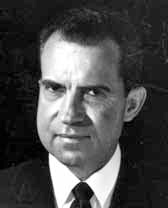
 The political landscape was changing, both internationally and closer to home. The Watergate scandal was a major political scandal in the United States involving the administration of U.S. President Richard Nixon from 1972 to 1974 that led to Nixon’s resignation.
The political landscape was changing, both internationally and closer to home. The Watergate scandal was a major political scandal in the United States involving the administration of U.S. President Richard Nixon from 1972 to 1974 that led to Nixon’s resignation.
The scandal stemmed from the Nixon administration’s continual attempts to cover up its involvement in the June 17, 1972, break-in of the Democratic National Committee headquarters at the Washington, D.C. Watergate Office Building.
1994 – 1998
Reverend Daniel Webster Aldridge, Jr.
For over three years the pulpit at All Souls Church was without a senior minister until the
search committee called Reverend Daniel Webster Aldridge, Jr. from Thurman-Hamer-Ellington Unitarian Universalist Church in Decatur, Georgia. He was a strong advocate for social justice. Dear to Reverend Aldridge’s heart was the plight of women in abusive situations. This concern led to the declaration against violence toward women being adopted by the congregation during his tenure. An interest in jazz brought local and national musicians to All Souls Church for “The Jazz Vespers” programs. These performances were always well attended.
Through a series of unfortunate events, some of the members of the church became dissatisfied with Reverend Aldridge. The congregation divided into two groups – the All Souls Unity Group wanted to retain the Senior Minister and the Betterment of All Souls Church Group wanted his dismissal. After several meetings and much discussion, on June 14, 1998 at a congregational meeting a vote was taken. Reverend Aldridge was terminated as the Senior Minister of All Souls Church.

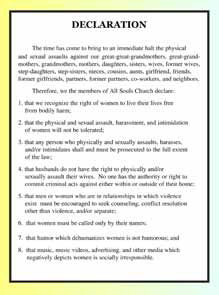
2001 – 2020
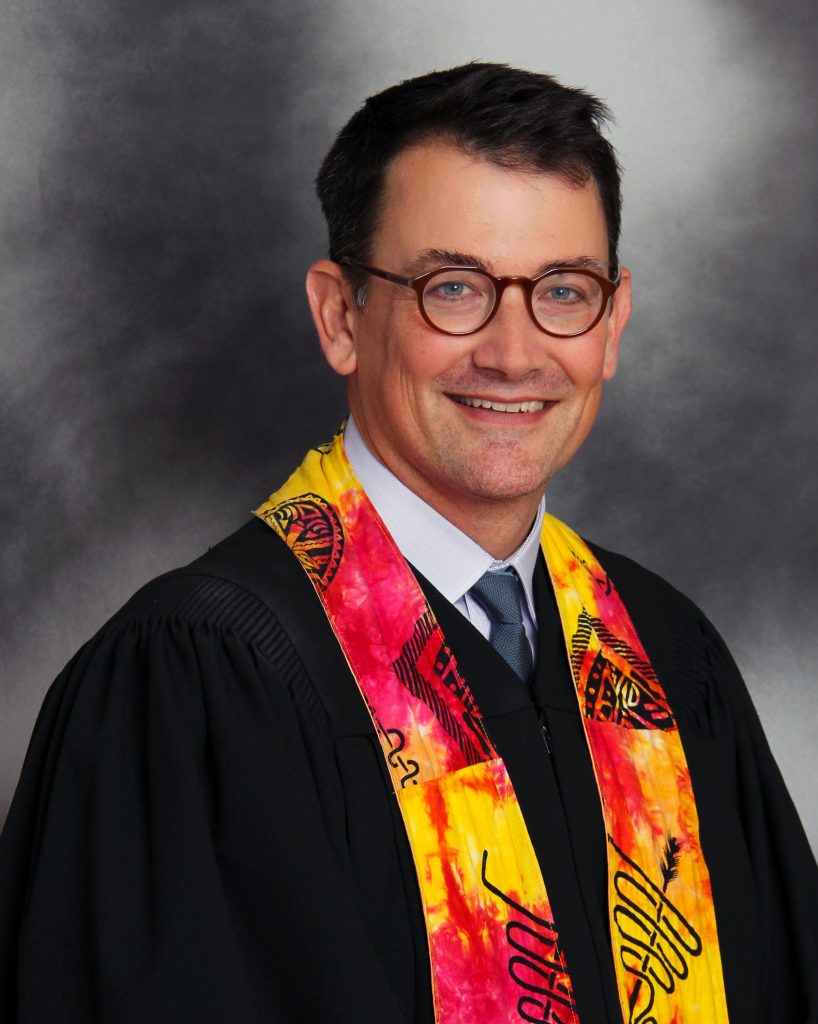
Rev. Dr. Robert M. Hardies
Born in Rochester, New York, Reverend Robert M. Hardies grew up in a Presbyterian church. As a young person, he was involved in many church activities where he was encouraged to take a leadership role. He graduated from Cornell University and Starr King School for the Ministry. As a college student Reverend Hardies was attracted to politics and life in an urban environment. He was very interested in the open senior minister’s position at All Souls Church in the nation’s capital. The pulpit had been vacant for over three years; the congregation had decreased drastically in size; and no one was encouraging him to take on the challenge of this position — nevertheless, Reverend Hardies applied for the job.
Reverend Hardies, the first openly gay minister, accepted the call to All Souls Unitarian Church and arrived on September 9, 2001 just two days before the devastating events of September 11th. Believing in a God that calls all souls to the welcome table, he led the way with words and deeds to achieve this goal. The congregation supported and applauded efforts to build that loving community of all souls that William Ellery Channing, father of American Unitarianism, spoke of so many years ago.
He led continued support for affordable housing and funding for the Columbia Heights neighborhood and, as one of the earliest gay ministers in the area, spearheaded efforts for marriage equality and LGBTQ rights alongside a multi-racial council of some 100 members of the clergy.

 The September 11 attacks, also commonly referred to as 9/11, were a series of four coordinated terrorist attacks by the militant Islamist terrorist group al-Qaeda against the United States on the morning of Tuesday, September 11, 2001. On that morning, four commercial airliners traveling from the northeastern U.S. to California were hijacked mid-flight by 19 al-Qaeda terrorists. The hijackers were organized into three groups of five hijackers and one group of four. Each group had one hijacker who had received flight training and took over control of the aircraft. Their explicit goal was to crash each plane into a prominent American building, causing mass casualties and partial or complete destruction of the targeted buildings. Two of the planes hit the Twin Towers of the World Trade Center, and a third hit the west side of the Pentagon. A fourth plane was intended to crash into a target in Washington, D.C., but instead crashed into a field near Shanksville, Pennsylvania, following a passenger revolt.
The September 11 attacks, also commonly referred to as 9/11, were a series of four coordinated terrorist attacks by the militant Islamist terrorist group al-Qaeda against the United States on the morning of Tuesday, September 11, 2001. On that morning, four commercial airliners traveling from the northeastern U.S. to California were hijacked mid-flight by 19 al-Qaeda terrorists. The hijackers were organized into three groups of five hijackers and one group of four. Each group had one hijacker who had received flight training and took over control of the aircraft. Their explicit goal was to crash each plane into a prominent American building, causing mass casualties and partial or complete destruction of the targeted buildings. Two of the planes hit the Twin Towers of the World Trade Center, and a third hit the west side of the Pentagon. A fourth plane was intended to crash into a target in Washington, D.C., but instead crashed into a field near Shanksville, Pennsylvania, following a passenger revolt.
 Same-sex marriage was legally recognized in the District of Columbia on December 18, 2009, when Mayor Adrian Fenty signed a bill passed by the Council of the District of Columbia on December 15, 2009, in the All Souls Church Sanctuary. The District became the first jurisdiction in the United States below the Mason–Dixon Line to allow same-sex couples to marry.
Same-sex marriage was legally recognized in the District of Columbia on December 18, 2009, when Mayor Adrian Fenty signed a bill passed by the Council of the District of Columbia on December 15, 2009, in the All Souls Church Sanctuary. The District became the first jurisdiction in the United States below the Mason–Dixon Line to allow same-sex couples to marry.
In response to court action in a number of states, the United States federal government and a number of state legislatures passed or attempted to pass legislation either prohibiting or allowing same-sex marriage or other types of same-sex unions. On June 26, 2015, the Supreme Court of the United States ruled in the case of Obergefell v. Hodges that a fundamental right to marry is guaranteed to same-sex couples by the Fourteenth Amendment, and that states must allow same-sex marriage.
 In 2016, Donald Trump was elected President and immediately signed three executive orders the week of January 23 which offend the dignity and threaten the rights of immigrants and refugees both in the United States and globally. In response, Rev. Hardies promised from the pulpit to open All Souls as a Sanctuary for those who needed it. This prompted the formation of the Migrant Solidary Team, which provides assistance to refugees and displaced persons and works with other organizations with a similar mission.
In 2016, Donald Trump was elected President and immediately signed three executive orders the week of January 23 which offend the dignity and threaten the rights of immigrants and refugees both in the United States and globally. In response, Rev. Hardies promised from the pulpit to open All Souls as a Sanctuary for those who needed it. This prompted the formation of the Migrant Solidary Team, which provides assistance to refugees and displaced persons and works with other organizations with a similar mission.
2019 –
Rev. Hardies decided to step down from the position of senior minister after 19 years of service to the congregation. The position has been occupied since by Interim Senior Minister, Rev. Kathleen Rolenz.
The novel human coronavirus disease 2019 (COVID-19) was first reported in Wuhan, China, in 2019, and subsequently spread globally to become the fifth documented pandemic since the 1918 flu pandemic. By September 2021, almost two years after COVID-19 was first identified, there had been more than 200 million confirmed cases and over 4.6 million lives lost to the disease.
A search committee is to be convened in 2022 to begin the search for a permanent senior minister.
Throughout this year All Souls Church will celebrate our “Spirit of Lives, Generations Together” with revelry, reflection, rejoicing, and remembrance.
